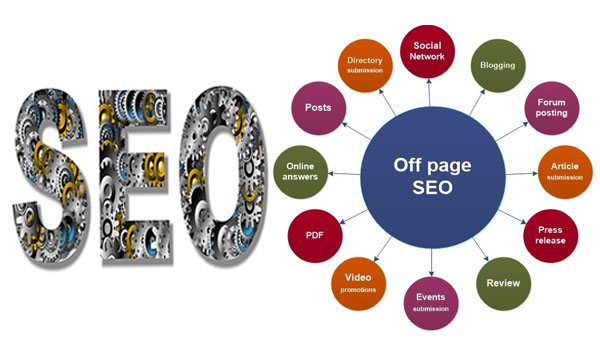Banking services have really evolved in the past few centuries. In this realm, mobile has been a really helpful tool to help people globally. Smartphones and tablets are very common these days as every other person avail these. For banks, it is important to optimize their site from a mobile perspective. This optimization ensures a smooth and user-friendly experience for their customers. This is an important aspect of contributing to higher customer satisfaction, resulting in increased search engine rankings. In adapting to this mobile-centric approach, financial institutions can better cater to the tech-savvy audience.
What Is Mobile-Friendly Banking?
You must be wondering what mobile-friendly really is. Well, mobile-friendly banking refers to the accessibility and usability of banking services on mobile devices. In today’s digital era, even financial institutions have adopted the technology to meet the need of growing demand of customers. A mobile-friendly banking platform allows users to conveniently arrange their accounts, check balances, transfer funds, etc by optimizing the mobiles.
These applications are designed keeping in mind that they must have a responsive user interface, seamless access experience, and many more operations through various screen sizes. Security features, including biometric authentication such as fingerprint, facial authentication, etc., and encryption, enhance the safety of mobile transactions. The convenience of access to bank details anytime, anywhere makes these user-friendly services essential. An expert responsive website designer ensures that these financial management tools are efficient and user-friendly on various devices.
Why Is Mobile-Friendliness Crucial For Banking Websites?
Mobile-friendliness is crucial for banks in various aspects as the usage of these devices is rising rapidly. In the realm where convenience and seamless integration of these financial services with mobile is crucial. A mobile-friendly bank website not only enhances the user experience but also allows customers to manage their finances on the go. With the expansion of mobile banking apps, websites also must adapt the facility to improve readability and usability.
This accessibility fosters financial inclusion and helps to reach a broader audience. Security features, such as biometric authentication, further bolster trust in mobile banking. Furthermore, these mobile-friendly interfaces provide you with quick transactions, which help users to check balances, transfer funds, and pay bills effortlessly. As the digital landscape evolves, a mobile-responsive banking website becomes not just a convenience but a necessity in meeting customer expectations and staying competitive in the financial industry.
Essential SEO Tips For A Mobile-Friendly Banking Website
Responsive Design
Implementation of such responsive design facilitates users with a seamless website experience. This means your site adjusts its layout, images, and content to suit all screen sizes from desktop to laptop. This size fit ensures a consistent and optimal user experience. Also, responsive design enhances accessibility to a wide range of audiences, increasing the visitor number. Prioritizing responsive design is key to reaching and engaging audiences across a variety of platforms and screen dimensions.
Clear Navigation
Mobile navigation is crucial for a seamless experience. Thus a design that is user-friendly must be incorporated while designing. The design should be easily tapable and easy to understand large icons, steer clear menus, and simplify navigation to ensure easy access to various sections. Streamlining the mobile interface, and keeping the intuitive response help to access the account. Remember, simplicity is key to a positive user experience on smaller screens.
Mobile-Friendly Content
The content in the mobiles should be precise, with concise headers, brief paragraphs, bullet points, and mobile-friendly image format. Try to simplify the text and compress the to enhance the readability on smaller screens. Not only that it also helps to prioritize user experience by ensuring seamless navigation and quick loading time. To optimize the content you may trim the unnecessary elements for a clear and clutter-free layout. By implementing practices, you create a user-friendly mobile experience.
Page Speed Optimization
The page that loads quickly reduces the bounce rate of your page. Therefore, to enhance your website’s performance, you must prioritize certain aspects of the page such as loading time, that too especially for mobile-based sites. To optimize the speed of the site you must compress the image, minimize the backend code, and employ caching methods. However, it also positively impacts search engine rankings. Which makes it a vital aspect of a successful online presence.
Local SEO For Banks
Banks work both domestically and in a wide geographical aspect. Therefore, to enhance your website’s visibility in local searches, it becomes crucial to utilize local SEO for banks with relevant information. In this information include your location, contact details, and business hours in both the website content and meta descriptions. By providing accurate information, you increase the likelihood of appearing in local search results, attracting nearby customers to your business.
Structured Data Markup
Structured data markup is detailed information that enhances your website’s search engine visibility. This markup uses standard tags to convey details such as product names, prices, and reviews. Which makes it easier for search engines to intercept and present relevant information. By implementing structured data, you guide search engines to comprehend the context of your web pages. Which can lead to higher rankings and improved click-through rates.
Testing and Monitoring
The work doesn’t after all the submissions and changes. Regular testing and monitoring on different mobile devices and browsers are necessary to make sure that users have an optimal experience. This practice helps to identify any link break or utility issue, that might enhance the overall speed or accessibility of the page. Using tools like Google Search Console can aid in monitoring mobile-specific errors, allowing you to optimize your site effectively. Prioritizing mobile optimization contributes to improved user satisfaction and can positively impact your website’s performance and search engine rankings.
Conclusion
In today’s digital age, mobile-friendly banking is crucial for success. It goes beyond mere convenience; it’s a strategic necessity. By adopting effective SEO strategies and optimizing your website for mobile devices, you ensure a smooth user experience. This not only boosts customer satisfaction but also enhances your online visibility. A mobile-friendly website is the key to establishing a strong digital banking presence. So, prioritize responsiveness and accessibility to cater to the growing number of users accessing financial services on their mobile devices. Embrace these changes to stay relevant and thrive in the evolving landscape of digital banking.































